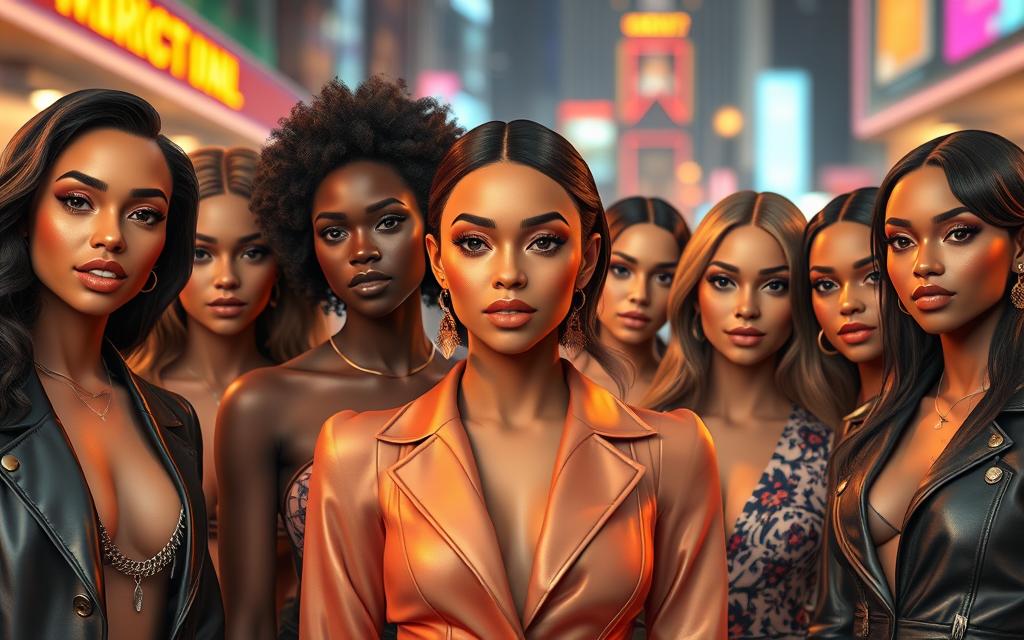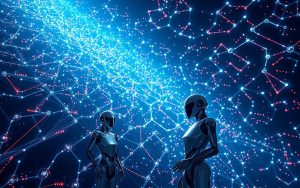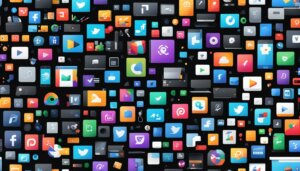Table of Contents
The content creator economy, valued at $21 billion, faces a new challenge. Virtual personalities like Aitana Lopez are reshaping the industry. With over 200,000 followers, this digital model earns $1,000 per post for brands like Victoria’s Secret.
Human influencers worry about losing income as AI alternatives gain traction. Companies such as The Clueless create synthetic models to cut costs. Diana Núñez, its co-founder, confirms the shift toward automation.
The rise of virtual influencers sparks debates about authenticity. While some brands embrace efficiency, others prioritize human connection. This tension reflects broader changes across marketing and entertainment.
How AI-Created Fakes Are Taking Business from Online Influencers
Digital personas like Aitana Lopez are rewriting influencer marketing rules. Barcelona agency The Clueless designed her to eliminate human talent fees. With pink hair and a “gamer girl” aesthetic, she earns $1,000 per sponsored post.
Pioneers of the Virtual Frontier
Lil Miquela, a mixed-race AI avatar, has dominated for a decade. She boasts 3M followers and collaborates with brands like Burberry. Campaigns with Prada reportedly net over $100,000 each.
H&M’s partnership with virtual model Kuki reveals the financial upside. Their Meta ads achieved 11x broader reach at 91% lower cost per recall. Artificial intelligence outperforms traditional campaigns in scalability.
Why Brands Embrace AI Avatars
Creators like Aitana offer total creative control. No scheduling conflicts or scandals—just predictable, on-brand content. The Clueless is already developing Laila, a curvy Mexican avatar, to diversify appeal.
Racial ambiguity in virtual influencers also helps. Lil Miquela’s undefined ethnicity lets global audiences project onto her. For companies, it’s risk-free relatability.
Why Brands Are Choosing Virtual Influencers Over Humans
Marketing teams now prioritize AI-generated personalities over human talent. A 2024 Influencer Marketing Hub report reveals 50% of marketers rate virtual collaborations as “very positive.” The appeal lies in three key advantages.

Total Creative Control and Risk Mitigation
Virtual influencers eliminate unpredictable human factors. Brands dictate every detail—from aesthetics to messaging—without contract disputes or scandals. As Becky Owen of Billion Dollar Boy notes:
“AI avatars offer risk-free consistency. They’re always on-brand, on-time, and on-message.”
Lower Costs and Scalable Content Production
AI models slash budgets by 91%, as seen in H&M’s Meta campaigns. Compare human vs. virtual costs:
| Expense | Human Influencer | Virtual Influencer |
|---|---|---|
| Daily Rate | $5,000+ | $0 (one-time design fee) |
| Content Revisions | 3–5 rounds | Unlimited |
Case Study: H&M’s 91% Cost Reduction
H&M’s AI model Kuki outperformed human-led ads in reach and cost efficiency. Key data:
- 11x broader audience penetration
- 91% lower cost per recall
- 24/7 multilingual content output
James Wolman of Braidr predicts hybrid strategies: “AI will augment human creativity, not replace it—for now.”
The Human Influencer Backlash and Authenticity Crisis
Authenticity debates intensify as virtual personalities dominate sponsored content. While AI models like Aitana Lopez deliver flawless campaigns, human influencers highlight engagement disparities and ethical gray areas.
https://www.youtube.com/watch?v=8dBDoJWIbOQ
Engagement Gaps: AI vs. Human Performance Metrics
Virtual influencers often lack genuine interaction. Studies show:
- AI avatars average 3.2% engagement rates vs. 5.8% for humans
- Comments on synthetic posts are 60% shorter and less personal
Cardiff University researchers attribute this to hollow progressivism—racial ambiguity in AI avatars designed for broad but shallow appeal.
Demands for Transparency and AI Disclosure
Regulatory gaps fuel distrust. The UK’s ASA lacks AI labeling rules, while India mandates clear #aimodel tags. Danae Mercer, a body-positive advocate, argues:
“Blurring lines between real and synthetic erodes trust. Audiences deserve to know who—or what—they’re engaging with.”
Ethical Concerns: Sexualization and Racial Ambiguity
Aitana’s lingerie promotions sparked debates about agency. Unlike human models, AI avatars can’t consent to their portrayal. Francesca Sobande’s research reveals another layer: 78% of AI avatar developers are male, often profiting from hypersexualized, female-coded designs.
Key ethical pitfalls:
- Male-dominated teams creating virtual influencers for male gazes
- OnlyFans-style monetization without creator autonomy
- Underrepresentation of Black developers in AI avatar projects
Conclusion: The Future of Influencer Marketing in an AI Era
The influencer marketing landscape is evolving fast. Technology now offers brands scalable solutions, but human connection remains vital. Experts predict a hybrid future—AI for broad awareness, humans for deeper trust.
Ridhima Kahn of Dapper Labs highlights a key insight: “Virtual success still hinges on authentic storytelling.” Consumers crave realness, especially as deepfakes blur lines. This demand reshapes the industry.
Forward-thinking agencies like The Clueless see AI as a tool for inclusivity. Pairing data-driven analytics with human creativity could redefine engagement. Learn more about AI’s impact on marketing strategies.
One truth endures: whether digital or human, compelling content wins. The world of influence will balance efficiency with empathy.
FAQ
What are virtual influencers?
Virtual influencers are digital personas created using artificial intelligence. They mimic human behavior and engage audiences on social media, often promoting brands. Examples include Aitana Lopez and Lil Miquela.
Why are brands shifting to AI influencers?
Companies prefer virtual influencers for cost savings, creative control, and risk avoidance. AI avatars reduce marketing expenses and eliminate scandals tied to real people.
How do AI influencers compare to human creators in engagement?
Some AI-generated content performs similarly or better in metrics like views and shares. However, audiences increasingly demand transparency about synthetic media.
What ethical concerns surround virtual influencers?
Critics highlight issues like unrealistic beauty standards, racial ambiguity, and lack of disclosure. Some AI avatars face backlash for promoting products without human accountability.
Can human influencers compete with AI technology?
Authenticity remains a key advantage for human creators. While AI excels in scalability, real personalities still drive deeper emotional connections with followers.
Which major brands use virtual influencers?
Companies like H&M, Prada, and Calvin Klein have partnered with digital avatars. H&M reported 91% lower costs using AI-generated campaigns compared to traditional influencer deals.









